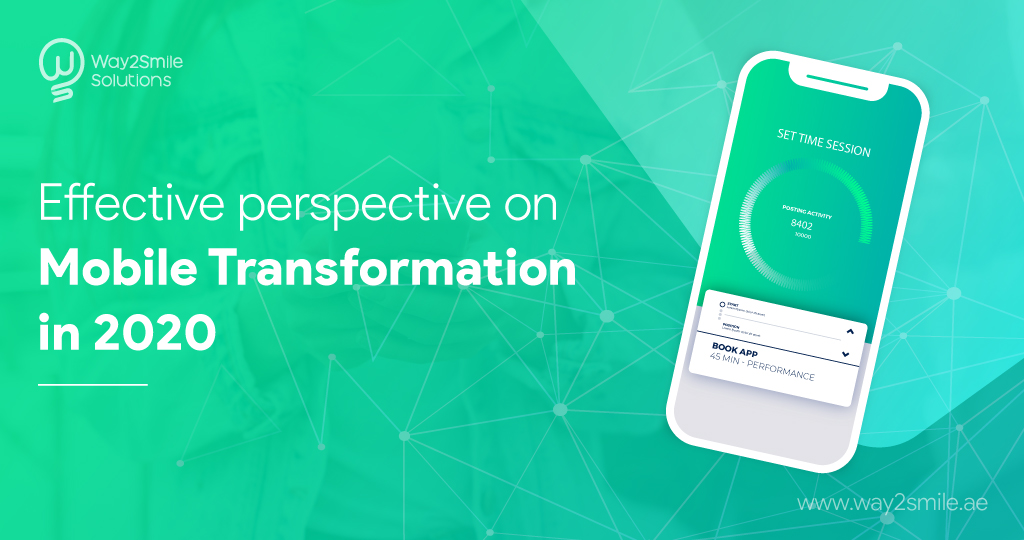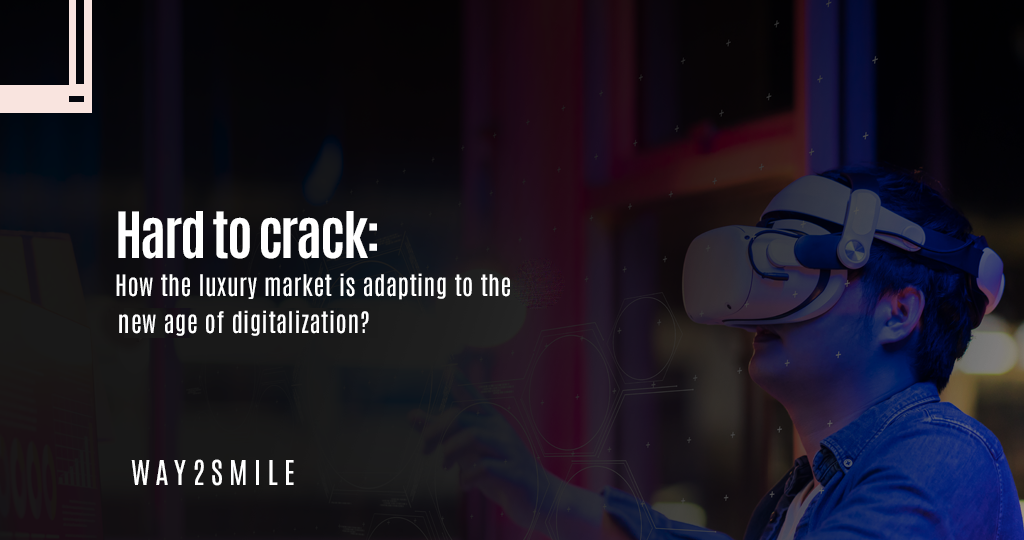When 6 billion out of 7 billion people on earth are using mobile phones, mobile transformation is inevitable to keep out of the picture. Businesses are going global, it is the time of integration scenarios and ease of work, more excellent stability, and seamless user experiences. Let us look at mobile transformation fix into the foundry of existing digital business, with existing strategies and future goals.
What is the mobile transformation?
Mobile transmission is a logically connected series of efforts that help any digital business transform itself into the consistently growing entity among smartphone users. It is targeted at capitalizing on the benefits of mobility, more comfortable reach, and seamless brand interaction.
What is a ‘mobile-first' approach?
The mobile-first approach starts with mobile-centric web designs and performance testing of digital products in the most smartphone-centric manner. The mobile-first approach draws a boundary circumscribing everything that prioritizes mobility-based solutions over the conventional web.
Roadmap for Mobile transformation by 2024
Pre-transformation research
It is essential to dive deep into descriptive analytics and bring up numbers. The numbers should help you reasonably conclude that undergoing a mobile transformation is extremely important, and there is no way out.
Remember, such transformations should only be taken if it is a 'hell-yes' and not just of 'why not?'. Business strategies, plans, and future goals should be verified by prescriptive analytics that helps you practice data-driven decision-making; when it comes to mobile transformation. It is essential to analyze and re-analyze the proposition of mobile transformation, on the whole. It should not be driven by not just something that may lead to a momentary fear of missing out (FOMO) or something that might pop up; otherwise.
Objective definition & goal setting
Beware, mobile transformation can be a deep-sea dive that makes you learn more words. You may be stuck wasting a lot of time material cost, effort. It is important to clearly define the end objectives of every task or a new variation in company culture, which you are trying to inculcate for reaching towards a larger goal. For instance, if you intend to level up the overall personalization. Therefore, it should include customer behavior analytics, preferential categories for suggestions and real-time location-based services for personalization tweaks like language, time and geo-connected suggestions
Projected business outcomes
Mobile transformation can only be deemed successful if the business owners can translate the end-objectives of mobile transformation like broader market reach, deeper penetration, and larger hooks of emotional engagement, convenience) into direct business figures. These may include the likes of profitability, optimize services, knowing your customers better, and eventually leading your path for the betterment of the overall digital product.
Solution wire-framing
The foundation of every mobile transformation must find business needs and customer requirements in the rock-bed. Then it should take a bottom-up approach. Exploring the best possible, wisest means to fulfill those requirements and customer expectations to live up to your brand. All this while, the financial team should provide constant support and monetary policing to avoid overspending, limiting resources in different phases, and optimized allocation of budget.
Stakeholder profiling
Profiling all stakeholders is crucial for kickstarting the grand mobile transformation. Major stakeholders like the end customers, marketers, promoters, products, and fewer developers and business owners all need to be profiled, then reviewed for their expected outcomes out of the mobile transformation and further analysis of the feasibility of the idea of cellular transformation. If the majority of stakeholders find it relevant to undergo a mobile transformation, then it is sensible to move ahead.
Impact analysis
Putting up a before and after picture of your business figures, the company productivity statistics, and the end customer-centric results is essential. It is necessary to know that sometimes, the overall impact might not be realized directly in terms of monetary growth or brand reputation. It may have a sense of sublime elements like customer satisfaction; brand credibility comes on the improved perception among the target market.
Benefits of mobile transformation
Business everywhere
As mentioned earlier, six Bn out of the seven Bn people on earth are using mobile phones. Thus, undergoing the mobile transformation opens up grand gateways for digital business for the most extensive possible market reach in the most sustainable manner. No companies have a higher chance of grabbing customers' attention because a large part of the millennials days spent strolling through mobile feeds and notifications. They're an essential part of any millennial's life and one of the best potential ways for a business to reach out to the most probable clients.
Workspace on the go
You can expect flexible working hours and a considerable shoot in the overall productivity of employees and all the primary stakeholders involved in the business. All customers find it much easier to interact with the brand and use your product and service offerings. Alongside the customer support team, developers and everyone else around is also benefited with mobility solutions allowing them to work from anywhere across the globe; just with an Internet connection. It is a serious upgrade from the soul-sucking exhaustive company culture, which did you raise productivity and also lowers down the employee satisfaction levels.
Easier brand-customer interaction
Customer engagement strategies are essential in the competitive digital business world. The ease of brand-customer communication is exceptionally high on the priority list, while the customer experience specialist and marketers orient the overall brand for customers. Millennials are embedding their lives deep within technology and digital ecosystems; they are creating various opportunities for companies to publicize in the right direction. The new businesses can pop-up on the most probable customers' minds and persist very strongly oppose the mobile devices, Macs, PCs, and tablets.
Wider market reach
As we have mentioned earlier, six bn out of 7 bn people on earth are using mobile phones right now. Digital businesses have almost no boundaries of possibilities. The product is capable of reaching the billions and Facebook, Instagram; Amazon are the best example of it. They have efficiently capitalized on the ease of approaching a more extensive market reach with a much-reduced customer acquisition cost. You can hire leading digital transformation companies to build the best in class-tested products. The broadest possible open market acknowledges there is a strategic and segmented manner.
Higher personalization
Mobile phones bring digital grand way closer to their customers than ever before. A smartphone is a direct peek into the personal life of your customers. It helps you take up data points, ultimately leading out to high-quality digital services with much higher personalization. Concepts like machine learning and artificial intelligence allow a higher degree of interaction between the brand and its customers. As a customer interacts more and more with the brand, a higher level of personalization turns to be more productive and cost-effective to execute. Machine learning models and predictive AI tools make it possible to provide higher personalization developing an emotional hook.
Challenges on the road to mobile transformation
Direct financial burden
It is important to note that all mobile translation projects are finance-intensive operations and create a direct financial burden on the company accounts and show up in the balance sheet. It is critical to analyze the economic feasibility of any mobile transformation. There are chances that your current finances might not allow you to carry out the change you are contemplating sustainably. It is essential to consider the market forecast for the competitive pricing of your products and services, along with the survival cost. Remember, mobile transmission is only sensible if your business is cash-rich. Investments like these into the future, however, might look immensely looking lucrative, but it makes sense only if you have the right amount of capital rolled up the sleeve.
Increased maintenance cost
There is a catch. Concepts like serverless architecture, containers are generally publicized with the proposition of reducing the overall application management cost. Then how come to the total cost increases if your current system undergoes a mobile transformation. Adoption of mobile for strategies required niche expertise. Intermediary tools used require different skills which are commonly not available in the market. The unit cost of management may decrease, but the technology market sees that professionals are negotiating payouts according to the demand for their skill.
Skill gap
Approximately 83% of the employees report a skill gap in the organizations leading the technology frontier. They feel that there is a skill gap between what is required to work on the present-day technologies and tools efficiently and what they know. The mobile transformation also faces hurdles because of a significant requirement of re-oriented skills.
Appropriate technology stacks
Building mobile applications is something familiar, but precisely planning strategic mobile transformation requires next-level understanding. It always deals with services, including internal customer-facing resources, required the expertise of another level. It is something that requires the internet is approaching because imitating what others are doing is not possible because of the scarcity of successful mobile transformations.
Using mobility in the wrong direction
It is also essential to drive the company in the right direction in the era of mobile transformation. The right path to undergo a mobile transformation will be to build compelling selling points within products and services that add sheer convenience and level up the productivity for all employees. In this case, you can check with a perfect mobile app development company that can guide you to the exact destination!
Straying from USPs
While we have correctly indicated that mobile transformation is carried into an unwanted direction, it is essential to safeguard your mobile transformation from straying from core USPs. For instance, there is an existing product that has followed the major USP as personalization. The mobile interfaces and finally translated mobility solution should also portray the same. Sometimes, it is difficult to build an exact carbon copy of the existing functionality is a new development-deployment environment. But, it is essential to reap the best possible results after an ongoing mobile transformation.
Internal process changes
Mobile transformation can only be successful in your company employees are looking to welcome and adopt the cultural differences which are required. It is essential to know that there will be specific new tools and changes in the routine that will be required for new projects and monitoring tasks. Translational change in the mobility solution is inevitable to have a high impact on every aspect of the development and management teams.
Final word
Mobile transformation should be considered more difficult than general digital transformation because of the lack of case studies and examples. Every company that plans to undergo a mobile transformation looking at the benefits should also consider the risk of failure. It is because you will be leading this frontier of mobile transformation for a lot of companies in the future. Pioneer mobile transformation with a leading mobile app development company that has an excellent track record. It should have versatility in technical skills that offer pleasure to have developed options across android, iOS, hybrid apps. Mobile applications play a protagonist in the whole technology scenario writing a canvas story using mobile transformation by 2024.







